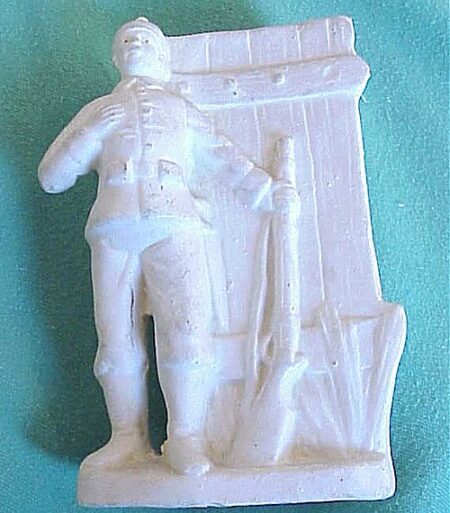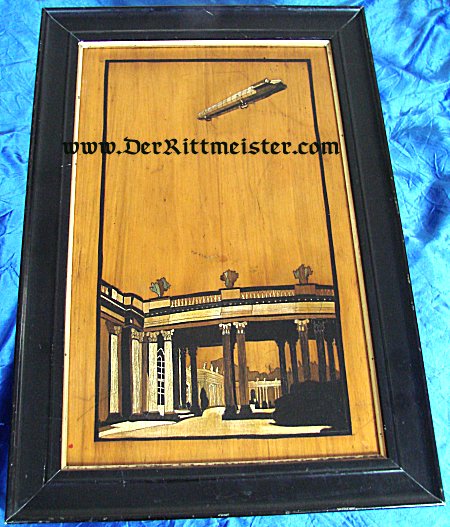Description
BRAUNSCHWEIG – STEIN – VETERAN’S – HUSAREN-REGIMENT NR 17
Braunschweig, referred to as Brunswick by the English, was a small Duchy that served as an important trade center throughout much of Germany’s earlier history. Braunschweig’s Herzog Friedrich Wilhelm (1771-1815), whose father was a Prussian Generalfeldmarschall, participated in the 1806 Battle of Jena, which was a major defeat of Prussia by Napoleon Bonaparte. Friedrich Wilhelm’s father was killed in the battle, and Braunschweig was taken over by France. Friedrich Wilhelm then fled to England in order to begin raising troops. After he had raised about 2,200 men, Friedrich Wilhelm returned to fight against Napoleon in 1809 with England’s Duke of Wellington.
Friedrich Wilhelm formed both a Hussar Regiment and an Infanterie Regiment from his recruits. [The Hussar Regiment eventually became Husaren-Regiment Nr 17, while the Infanterie Regiment became Infanterie-Regiment Nr 92. Both regiments eventually became famous for wearing the infamous Totenkopf (Death’s Head) on their headdresses. They also retained their black “mourning” uniforms until the switch to feldgrau in WW I]. Friedrich Wilhelm’s men became known as the “Black Brunswickers” because they wore black uniforms as a sign of mourning for their homeland’s takeover by France. Friedrich Wilhelm soon became known as the “Black Duke.” Although his troops were decimated in Spain and Portugal, the Black Duke refused to give up and refitted his regiments.
When Napoleon escaped from his exile to Elba in 1815, Friedrich Wilhelm joined the allied forces rallying once more under Wellington’s command. This ultimately led to Bonaparte’s defeat on 18 June 1815 at the Battle of Waterloo. Two days prior to that victory, however, was the Battle of Quatre Bras. During this bitterly contested battle, the Black Duke was mortally wounded while leading his Hussars in a charge.
Braunschweig swore fealty to the Kingdom of Hannover later in the 19th Century. The Duchy and the Kingdom of Hannover were assimilated into Prussia following the defeat of Austria and her allies in the 1866 Austro-Prussian War. Husaren Regiment Nr 17 eventually gained fame for their actions in the 1870/1871 Franco-Prussian War and were later allowed to decorate their headdresses with battle bandeaux from the Napoleonic Wars, including those for “Peninsular, Sicilien, Waterloo, and Mars La Tour.”
With that brief summary of Braunschweig’s history, we turn to the impressive Husaren Regiment Nr 17 veteran’s stein that we are offering today. It stands an impressive 10 ½” tall. It measures 3″ in diameter just under its lid, and 4″ in diameter at the stein’s base. The stein’s center features a Braunschweig Hussar at full gallop. He is wearing his parade plume and his black attila with yellow braid. [What attention to detail]! The rider is framed within a circle of multicolored flags that are capped with Braunschweig’s Ducal Crown. The crossed flags of Germany and Braunschweig appear below the rider. Between these flags is a blue and yellow shield emblazoned with “5. Eskad.” Two bandeaux that specifically mention Husaren-Regiment Nr 17 flank the shield. The various troopers from Eskadron Nr 5 have their names listed on either side of the frame. The veteran’s name, Quintel, appears in the area above the stein’s center. He served in the regiment from 1896 to 1898. It is quite possible that he rejoined a Braunschweig unit during WW I. Assuming that he was twenty in 1896 (the normal age for German military service), he would have been thirty-eight at WW I’s outbreak.
Two additional panels flank the central one. To its left, we see four troopers at a full gallop, while on the right a trooper has stopped in front of a house to bid farewell to his loved one as troopers disappear into the distance.
The stein is topped with a very detailed pewter lid. A trooper astride a rearing horse decorates its top. The trooper wears his busby, complete with its parade plume. A number of military motifs, including cannons and even an 1870 Iron Cross, decorate the lid beneath the trooper. The stein’s thumb device is in the shape of an uncrowned eagle. When one uses that device to open the stein and hold it up to light, a lithopane is revealed depicting an older couple in traditional dress. The man is seated and the woman is bending over toward him, perhaps offering him a drink.
The stein is the standard .5 litre size. The colors are amazingly vibrant for being nearly one-hundred-twenty-years-old. The stein’s only flaw is a chip at the base. Since this is the strongest part of the stein, no structural issues are involved.
This is a very rare stein from one of Germany’s most legendary cavalry regiments. It participated in major campaigns in multiple wars. Then, like all other cavalry units, ended WW I serving in the trenches dismounted from their beloved horses.








